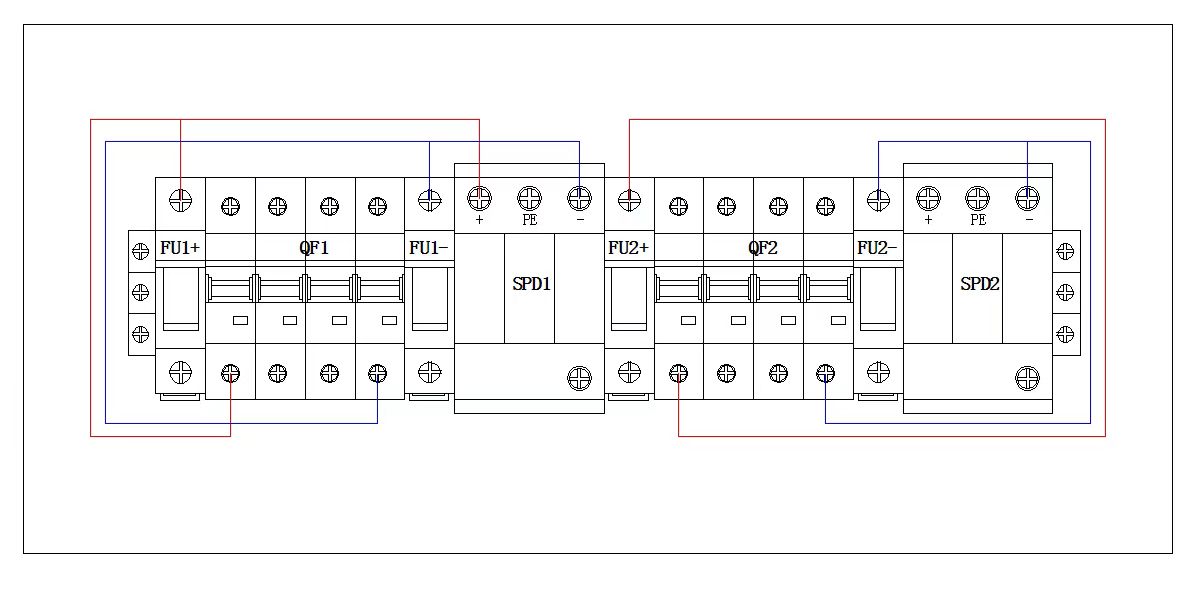PV Combiner Box Safety Standards and Compliance Explained
Safety and compliance are critical in any solar photovoltaic (PV) system. The PV combiner box is a central part of system protection, consolidating multiple strings of panels while ensuring electrical and fire safety.
Selecting a combiner box that complies with international standards not only guarantees system performance but also protects personnel, equipment, and property.
1. Why Safety Standards Matter in PV Combiner Boxes
Unlike other electrical enclosures, PV combiner boxes operate in challenging outdoor environments with high DC voltages (600V, 1000V, or 1500V).
Poorly designed or uncertified equipment can lead to overheating, arc faults, electrical fires, or catastrophic system failure.
Compliance ensures:
- Safe handling of high DC voltages and currents
- Protection from lightning and surge events
- Fire prevention through certified materials
- Reliable long-term operation under harsh environments
- Regulatory approval for grid-connected solar systems
2. Global Safety Standards Governing PV Combiner Boxes
Several standards organizations provide guidelines and requirements for PV combiner boxes.
Key international and regional standards include:
- IEC Standards – International Electrotechnical Commission (Europe/global)
- UL Standards – Underwriters Laboratories (North America)
- NEC Code – National Electrical Code (USA)
- CE Marking – European Union regulatory compliance
- CCC Certification – China Compulsory Certification
3. IEC Standards Relevant to PV Combiner Boxes
The IEC provides international standards widely adopted in Europe, Asia, and beyond.
Key IEC standards for PV combiner boxes include:
- IEC 61439 – Low-voltage switchgear and control gear assemblies
- IEC 60269-6 – Fuses for photovoltaic systems
- IEC 61643 – Surge protective devices
- IEC 62109 – Safety of power converters for PV applications
- IEC 60529 – Ingress protection (IP rating of enclosures)
IEC-compliant combiner boxes undergo testing for electrical strength, insulation resistance, heat resistance, fire performance, and weather durability.
4. UL Standards and Certification in North America
In the United States and Canada, UL certification is the benchmark for safety compliance.
Key UL standards include:
- UL 1741 – Inverters, combiners, and PV system equipment
- UL 67 – Panelboards and enclosures
- UL 508A – Industrial control panels
- UL 489 – Molded-case circuit breakers
UL-certified PV combiner boxes are tested for electrical safety, fire hazards, and mechanical endurance.
This certification is essential for compliance with most U.S. building codes and utility interconnection requirements.
5. NEC (National Electrical Code) Compliance
The NEC sets legal requirements for PV system installations in the U.S.
Important sections for combiner boxes include:
- NEC 690.9 – Overcurrent protection
- NEC 690.15 – Disconnecting means
- NEC 690.17 – Switch ratings for DC circuits
- NEC 705 – Interconnection to the grid
Installers must ensure that combiner boxes are NEC-compliant to pass inspection and avoid costly project delays.
6. CE and European Union Requirements
In the European Union, combiner boxes must carry the CE mark, indicating conformity with EU directives.
Compliance often includes:
- Low Voltage Directive (LVD)
- Electromagnetic Compatibility (EMC) Directive
- RoHS Directive (Restriction of Hazardous Substances)
A CE-marked combiner box ensures it is legally marketable across EU countries.
7. Safety Components Required for Compliance
A compliant PV combiner box must integrate certified protective devices, including:
- Fuses or breakers – Tested under IEC/UL overcurrent standards
- Surge Protective Devices (SPDs) – IEC 61643 compliant
- DC disconnect switch – NEC 690 compliant
- Grounding and bonding – UL 1741 and NEC 690 requirements
- Fire-resistant materials – UL94 flammability ratings
8. Ingress Protection and Environmental Standards
Since PV combiner boxes are installed outdoors, compliance extends to enclosure ratings.
Key standards include:
- IP65 / IP66 – Protection against dust and water ingress
- NEMA 3R / 4X – U.S. enclosure ratings for outdoor environments
- UV resistance – Material testing for solar exposure
- Salt mist corrosion resistance – IEC 60068 for coastal installations
9. Common Safety Risks Without Compliance
- Overheating and fire caused by undersized fuses
- Electrical arcing due to poor switchgear
- Lightning damage in absence of SPDs
- Enclosure degradation under UV or rain exposure
- Legal penalties for non-compliant installations
10. How Installers and Owners Can Verify Compliance
To ensure compliance:
- Request certificates from the manufacturer (UL, IEC test reports)
- Check for compliance labels on the combiner box
- Verify third-party laboratory approval (TUV, Intertek, CSA)
- Cross-check NEC and local code requirements
- Confirm enclosure rating against site environment
11. Case Study: Safety Compliance in a 5MW Solar Project
In a 5MW solar farm in Texas, NEC and UL compliance was mandatory for utility approval.
The selected combiner boxes included:
- UL 1741 certification for PV system use
- Type II SPDs tested per IEC 61643
- DC disconnect switches NEC 690 rated
- NEMA 4X stainless steel enclosures for humidity resistance
The result was successful grid connection, minimized downtime, and reduced insurance risk due to verified compliance.
12. Future of Safety Standards in PV Combiner Boxes
As PV systems scale to higher voltages (1500V and beyond), safety standards are evolving.
Future trends include:
- Enhanced arc fault detection requirements
- Integration of IoT-based safety monitoring
- Stricter environmental testing for extreme climates
- Global harmonization of IEC, UL, and NEC standards
Conclusion
Safety compliance is not optional—it is the backbone of reliable PV system performance.
By choosing PV combiner boxes that meet IEC, UL, NEC, and CE standards, project developers and installers can ensure long-term safety, protect investments, and satisfy regulatory bodies.
In an industry where failures can be costly and dangerous, compliance is the best insurance policy.



